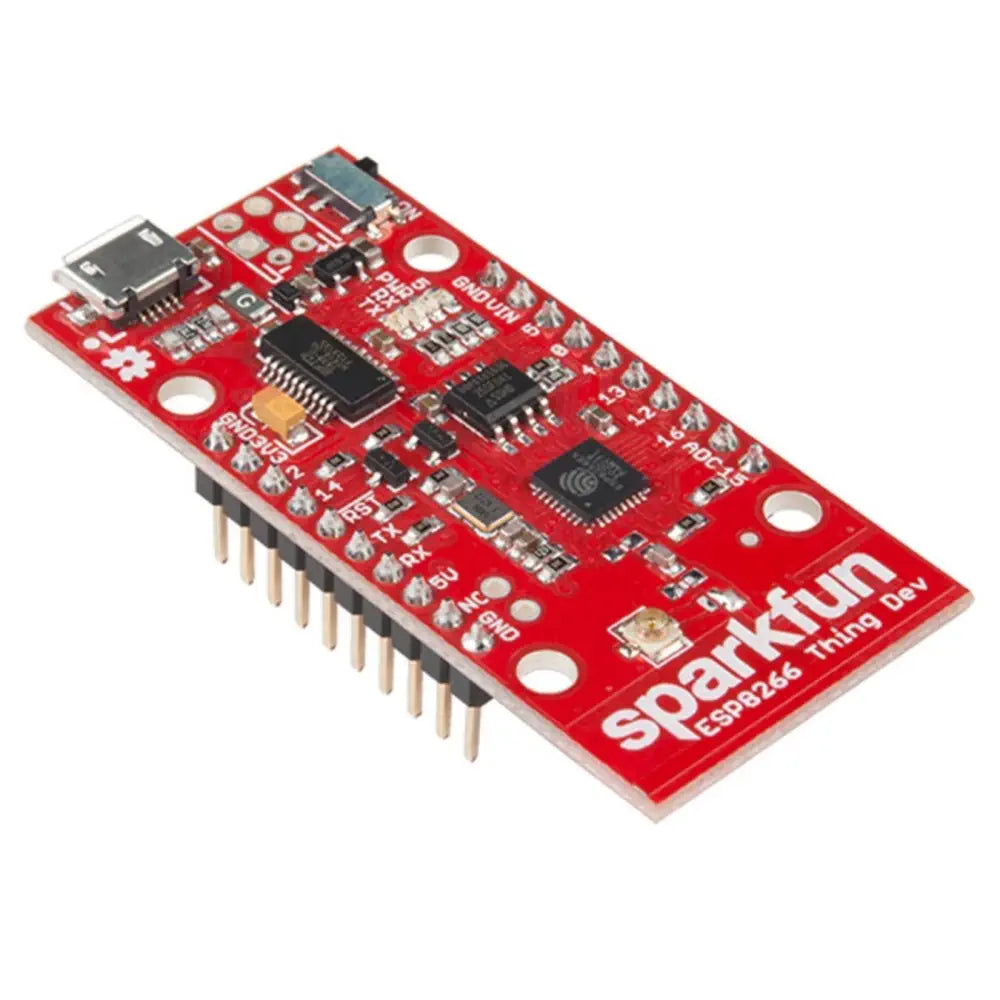Description
- WiFi-enabled microcontroller with pre-soldered headers
- Onboard FTDI USB-to-Serial
- Can be programmed with Arduino IDE
- Integrated TCP/IP protocol stack, TR switch, balun, LNA, power amplifier and matching network
- Operating range: 3.3V- 3.6V (this version does not have a built-in LiPo charger)
- +19.5dBm output power in 802.11b mode
The ESP8266 Thing Development Board w/ Headers is a development board that has been solely designed around the ESP8266, with an integrated FTDI USB-to-Serial chip. The ESP8266 is a WiFi-enabled microcontroller. Like any microcontroller, it can be programmed to blink LEDs, trigger relays, monitor sensors or automate coffee makers. With an integrated WiFi controller, the ESP8266 is a one-stop shop for almost any internet-connected project.
To top it all off, the ESP8266 is incredibly easy to use; firmware can be developed in Arduino and uploaded over a simple serial interface. The ESP8266 Thing Development Board breaks out all of the module’s pins with pre-soldered headers, and the USB-to-serial converter means you don’t need any peripheral components to program the chip. Just plug in a USB cable, download the Arduino board definitions, and start IoT-ing.
Features
- The pins are broken out to two breadboard-compatible rows
- The USB connector sits next to an optional power supply input
- It also features an ON/OFF switch, controlling power to the ESP8266
- LEDs toward the inside of the board indicate power, charge and status of the IC
- The ESP8266’s maximum voltage is 3.6V, so the Thing has an onboard 3.3V regulator to deliver a safe, consistent voltage to the IC
- I/O pins also run at 3.3V; you’ll need to level shift any 5V signals running into the IC
- The board includes footprints for a 2-pin JST, 2-pin 3.5mm screw terminal, or a simple 0.1"-pitch 2-pin header
- Unlike the original ESP8266 Thing, the ESP8266 Thing Dev Board does not have a built-in LiPo charger
The Thing Dev Board even includes a PCB trace antenna as a default WiFi antenna. If you need to connect a more sensitive antenna, or need to route outside an enclosure, a U.FL connector is also available on the board.
- 1 x ESP8266 Thing Developpment Board w/ Headers
PDF Files

